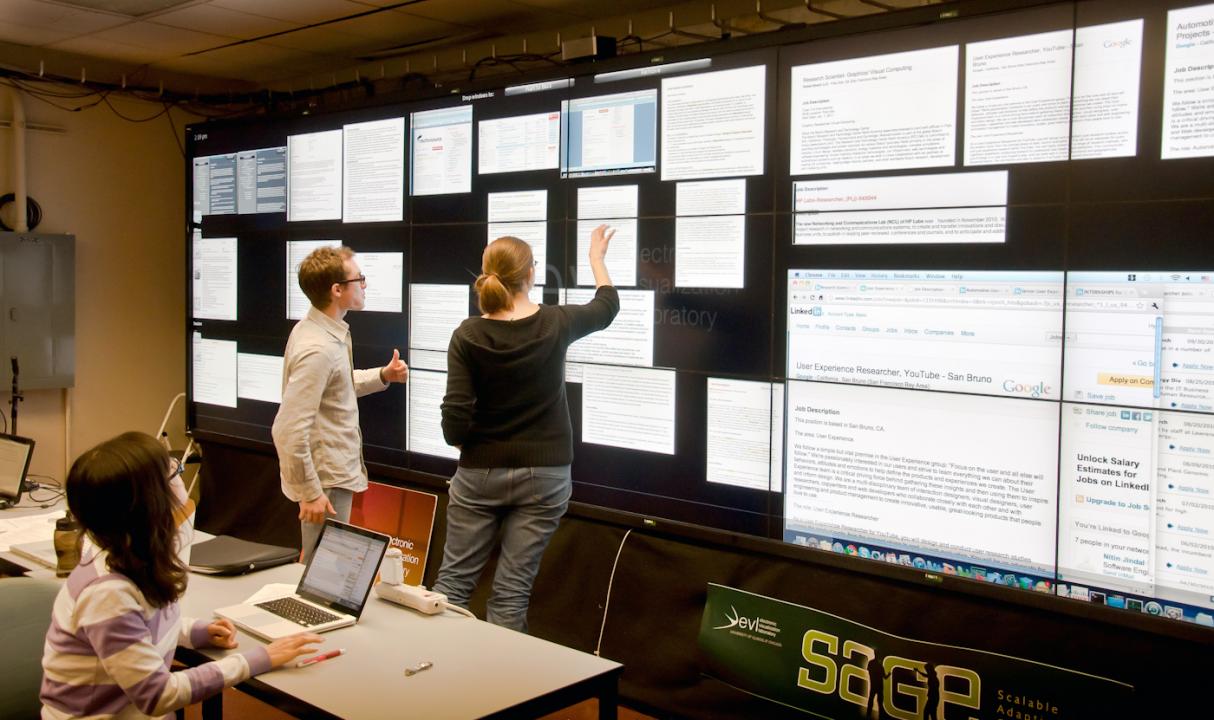|
|
||||||||||||||||||
Immersive Empathic Design for Interdisciplinary Collaborations
Authors: Chen, Y.
Publication: Submitted as partial fulfillment of the requirements of the degree of Doctor of Philosophy in Computer Science, University of Illinois at Chicago, Graduate College In this dissertation I propose the “immersive empathic design” approach for interdisciplinary collaborations. It is hard to design a useful system and it is even harder to design a system for people who are working in a different knowledge domain. The high domain knowledge barrier can make it difficult for a person who is outside of a given domain to imagine the experience of a user within that domain. This can lead to systems that are designed, implemented, and deployed without sufficient knowledge of the domain they will be used in, leading to a low willingness of users to adopt the new system. Globally distributed collaboration is becoming more common in the modern world, and modern science discovery requires interdisciplinary collaboration. This imposes even more spatial and temporal constraints in designing an interactive system. The goal is to move beyond collaborative technology showcases in the laboratory to workplace deployments that solve real-world problems. The proposed “immersive empathic design” approach attempts to reach across the discipline boundary. In the exploratory case study in geological core drilling, computer scientists were embedded in the core drilling workplace setting. On-site hands-on “experiential learning” and off-site reflection analysis inspired innovations in the workplace setting while still maintaining their domain-specific perspective. This approach helped to overcome the initial high domain knowledge barrier. It also established trust with domain users and encouraged system adoption. The proposed approach helps computer scientists to overcome the initial domain barrier efficiently in interdisciplinary collaborations. The domain knowledge obtained in the immersive experience forms a sustainable common ground between the collaborating parties. It affords authentic user experience and more context-sensitive inquires in later design and development activities. The process encourages computer scientists to design an innovative system that will be used by domain users to solve real-world problems. Modern science discovery requires interdisciplinary collaboration. The proposed method suggests system developers to step out of the laboratory environment and be empathic with their new system’s potential users through immersive hands-on experience, so the system being designed will better fit the users’ needs and expectations. The trust established through this process should encourage the users’ adoption of the new system. It provides a general guideline to “co-evolution on a human scale” in interdisciplinary collaborations. The method and lessons learned will be beneficial to future human computer interface practitioners when the potential users of the system are within domains sharing similar qualities such as scale, a high knowledge domain barrier, and geographically distributed collaborations. Date: May 11, 2011 Document: View PDF |